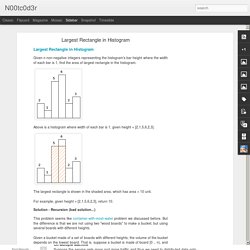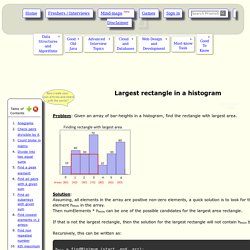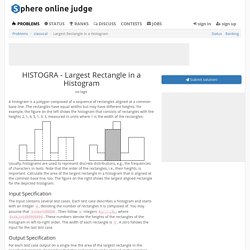

Data Structures Archives. Dynamic Programming - Introduction. Wow, it’s been a while since I’ve written anything here.

Between changing jobs, working on my PhD and moving to a new country I guess you could say I’ve been pretty busy. But at the same time, together with all these changes in my life there’s a ton of new things that I’m learning almost every day. And, as many others, I feel that writing about them in a way that is easy for others to understand is one of the best ways to consolidate my own learning. So I’ll try to write here more often from now on.
So with that covered lets move to the important stuff. On this post I wanted to talk about Dynamic Programming. So what exactly is Dynamic Programming? Computer Algorithms: Finding the Lowest Common Ancestor. Introduction Here’s one task related to the tree data structure.

Given two nodes, can you find their lowest common ancestor? Pedrovgs/Algorithms. Mycodeschool. This item has been hidden This item has been hidden Pointers in C/C++ Play all Pointers is one concept that does not go well with beginners.

In this series of videos, we will try to demystify pointers. 10:07 10:57 14:16 12:54 14:41 10:01 16:45 17:26 View 5 more This item has been hidden This item has been hidden. Algorithm, Linked list reverse. 503 Service Temporarily Unavailable. Largest Rectangle in Histogram. Largest Rectangle in Histogram Given n non-negative integers representing the histogram's bar height where the width of each bar is 1, find the area of largest rectangle in the histogram.

Largest rectangle in a histogram - PrismoSkills. Problem: Given an array of bar-heights in a histogram, find the rectangle with largest area.

Solution: Assuming, all elements in the array are positive non-zero elements, a quick solution is to look for the minimum element hmin in the array. Then numElements * hmin can be one of the possible candidates for the largest area rectangle. If that is not the largest rectangle, then the solution for the largest rectangle will not contain hmin bar. Recursively, this can be written as: hmin = findMinimum (start, end, arr); maxAreaRectangle = max ( hmin * (end-start), maxAreaRectangle (start, (hmin -1)), maxAreaRectangle ((1+ hmin), end), ); Problem H: Largest Rectangle in a Histogram - Judas. Problem H: Largest Rectangle in a Histogram Note that the area of the largest rectangle may exceed the largest 32-bit integer.

Due to the large numbers of rectangles, the naive O(n2) solution is too slow. Even though O(n*log(n)) or O(n) is required, there are several kinds of solutions to this problem. In the following, we will identify a histogram with the sequence of the heights of its rectangles. Divide-and-conquer using order-statistic trees. Algorithm - Maximize the rectangular area under Histogram. SPOJ.com - Problem HISTOGRA. A histogram is a polygon composed of a sequence of rectangles aligned at a common base line.

The rectangles have equal widths but may have different heights. For example, the figure on the left shows the histogram that consists of rectangles with the heights 2, 1, 4, 5, 1, 3, 3, measured in units where 1 is the width of the rectangles: Usually, histograms are used to represent discrete distributions, e.g., the frequencies of characters in texts. Largest Rectangular Area in a Histogram. Find the largest rectangular area possible in a given histogram where the largest rectangle can be made of a number of contiguous bars.

For simplicity, assume that all bars have same width and the width is 1 unit. For example, consider the following histogram with 7 bars of heights {6, 2, 5, 4, 5, 2, 6}. The largest possible rectangle possible is 12 (see the below figure, the max area rectangle is highlighted in red) We have discussed a Divide and Conquer based O(nLogn) solution for this problem. In this post, O(n) time solution is discussed. 1) Create an empty stack. Recursion. The idea of calling one function from another immediately suggests the possibility of a function calling itself.

The function-call mechanism in Java supports this possibility, which is known as recursion. Your first recursive program. Artificial Intelligence. This is an Archived Course EdX keeps courses open for enrollment after they end to allow learners to explore content and continue learning.

All features and materials may not be available, and course content will not be updated. Check back often to see when new course start dates are announced. Artificial intelligence is already all around you, from web search to video games. AI methods plan your driving directions, filter your spam, and focus your cameras on faces. The course will introduce the basic ideas and techniques underlying the design of intelligent computer systems.
Statistical and decision–theoretic modeling paradigm. Join us today to learn more about how AI affects your life, and where it is headed in the future. How to reverse a linked list in java. This is one of popular interview question. Part-1:How to detect a loop in linked list in java Part-2:How to find middle element of linked list in java Part-3:How to find nth element from end of linked list Part-4:How to reverse a linked list in java There can be two solution for reversing linked listIterativeRecursive. Algorithm and Data Structure Animations, Y. Daniel Liang. Sorting Algorithm Animations. Algorithms in Java, Parts 1-4, 3rd edition by Robert Sedgewick.
Addison Wesley, 2003. Quicksort is Optimal by Robert Sedgewick and Jon Bentley, Knuthfest, Stanford University, January, 2002. Dual Pivot Quicksort: Code by Discussion. VisuAlgo - visualising data structures and algorithms through animation. Data Structures and Algorithms - CodeChef Discuss. Java SE 7 Collections-Related APIs and Developer Guides. The collections framework is a unified architecture for representing and manipulating collections, enabling them to be manipulated independently of the details of their representation. It reduces programming effort while increasing performance. It enables interoperability among unrelated APIs, reduces effort in designing and learning new APIs, and fosters software reuse. The framework is based on more than a dozen collection interfaces. It includes implementations of these interfaces and algorithms to manipulate them.
Overview Overview - An overview of the collections framework. API Specification API Reference - An annotated outline of the classes and interfaces comprising the collections framework, with links into the JavaDoc. Tutorials and Programmer's Guides Tutorial - A tutorial introduction to the collections framework with many programming examples. API Enhancements More Information Design FAQ - Answers to frequently asked questions (FAQ) about the design of the collections framework.
Lecture 3: Divide-and-Conquer: Strassen, Fibonacci, Polynomial Multiplication. Lectures in Advanced Data Structures (6.851) Data Structures and Algorithms - CodeChef Discuss. Introduction to Programming in Java. CodinGame. Aima-java/aima-java. Data Structure Visualization. Why is quicksort better than other sorting algorithms in practice? - Computer Science Stack Exchange. Under what conditions is a specific sorting algorithm actually the fastest one?
Java Tutorials. Algorithms and Data Structures. Stack is one of the fundamental data structures in computer science and it is used in many algorithms and applications. As an example, stack is used: implicitly in recursion; for expression evaluation; to check the correctness of parentheses sequence; etc. First of all, we will describe Stack ADT and then show two different implementations. Stack ADT Well illustration from the real world is a stack of books, where you can operate with a "top" of the stack only. Data Structures – topcoder. By timmac — topcoder memberDiscuss this article in the forums Even though computers can perform literally millions of mathematical computations per second, when a problem gets large and complicated, performance can nonetheless be an important consideration. One of the most crucial aspects to how quickly a problem can be solved is how the data is stored in memory.
To illustrate this point, consider going to the local library to find a book about a specific subject matter. Most likely, you will be able to use some kind of electronic reference or, in the worst case, a card catalog, to determine the title and author of the book you want. Since the books are typically shelved by category, and within each category sorted by author’s name, it is a fairly straightforward and painless process to then physically select your book from the shelves.
Simple Data Structures The simplest data structures are primitive variables. ISC Important Programs. Algorithms, 4th Edition by Robert Sedgewick and Kevin Wayne. We Help Coders Get Hired. For every idea you have at an interview, it's super important to be able to evaluate its efficiency. Efficiency is measured by computing the underlying algorithm's time and memory complexity. Why is complexity so important? Solving problems is not just about finding a way to compute the correct answer. The solution should work quickly enough and with reasonable memory usage. Otherwise, even the smartest solution is not useful. Your solution is good enough in terms of speed and memory. Amazon Interview Questions. Home - GeeksQuiz. INTERNAL REPRESENTATION (Java, C++) Like any other dynamic data structure, BST requires storing of some additional auxiliary data, in order to keep its structure. Each node of binary tree contains the following information: a value (user's data); a link to the left child (auxiliary data); a link to the right child (auxiliary data).
Java_collections_img_0.jpg (JPEG Image, 734 × 1067 pixels) - Scaled (93%) Big-O Algorithm Complexity Cheat Sheet. Why is quicksort better than other sorting algorithms in practice? - Computer Science Stack Exchange.